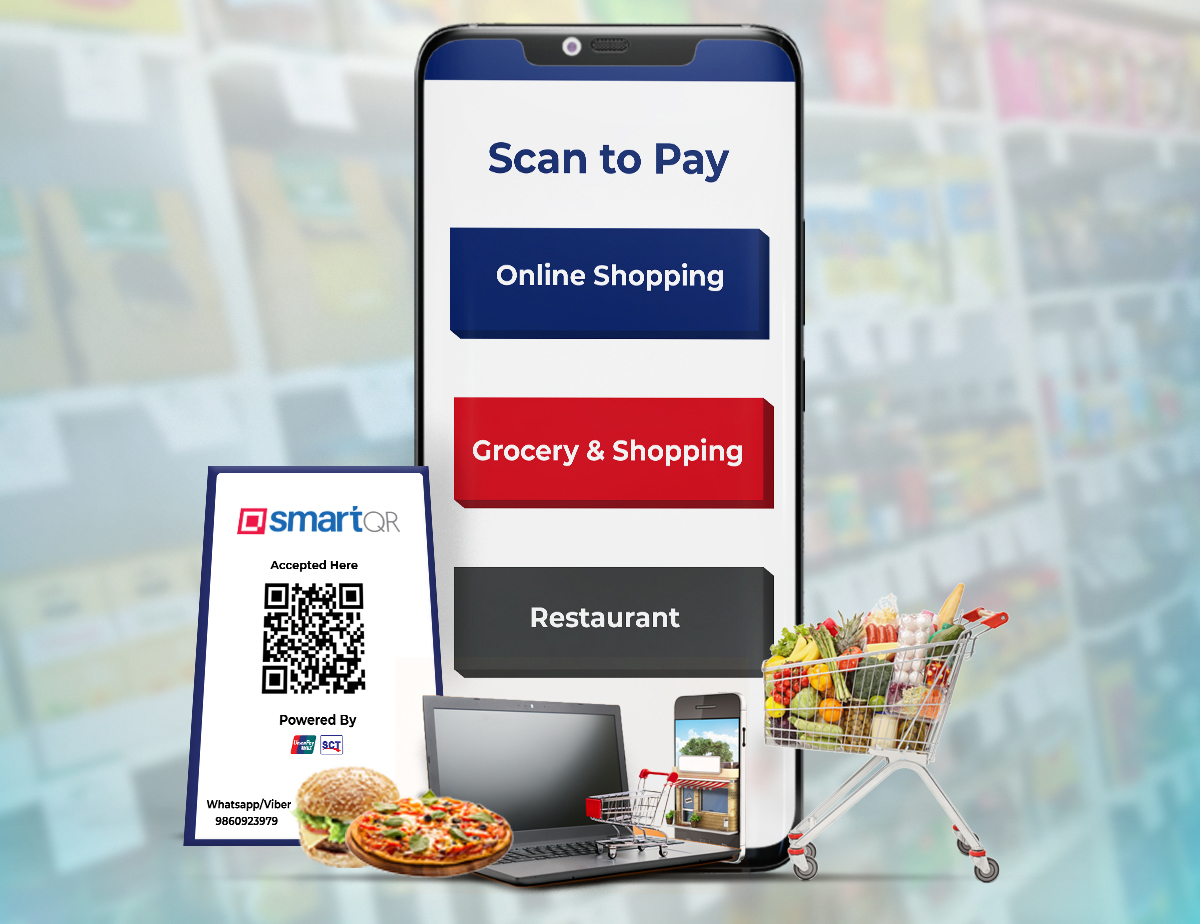
Scan To Pay: The Impact of Covid-19
If you are on the internet, you probably have heard the phrase ‘Scan To Pay.’ This phrase came into the limelight with the growth of mobile banking apps and digital wallets in Nepal. And it is currently a trend in the Nepalese market.
So what exactly does Scan To Pay mean?
What is Scan To Pay?
Scan To Pay is a mobile-based payment system that enables fund transfer by scanning a QR code using applications that support this feature. In the case of Nepal, the feature is used mostly by banks’ mobile applications and digital wallets and is commonly seen at shops, restaurants, and department stores.
Here, customers simply scan a QR code with their mobile app and either enter the transaction amount, or confirm the amount shown by generated Dynamic QR , and finally submit the transaction. The amount gets transferred directly from the digital wallet or the bank account without having to enter the merchant’s information.
Adapting to Covid-19
Covid-19 calls for physical distancing, and to avoid any kind of physical contact, even with money to avoid the check of transmission.
This situation called for a solution provided by the ‘Scan To Pay’ cashless transaction service. Since everyone was reluctant towards exchanging cash, people were more attracted to the idea of just scanning a QR to make transactions, eliminating the possibility of physical contact.
As the number of Covid cases went up, more and more customers preferred shops where a QR code was an option, leading to more merchants signing up for QR codes.
In fact, according to the Payment System Indicators reports by the Nepal Rastra Bank, there was a drastic increase in QR-based transactions from the beginning of the pandemic. The total no. of QR-based transactions in Bhadra 2077 was just 179,150 with a total amount of 0.648 billion rupees, whereas, in Jestha 2078, there were 1.64 million transactions with a total amount of 6.28 billion rupees transacted; that’s almost a 10-time increase in just 9 months.
The Future of Scan To Pay
The future of Scan To Pay looks promising based on the numbers and technological advancements as well as the support provided by the Government of Nepal.
In fact, even the Government of Nepal has adopted the technology and has been incorporating digital payment increasingly after the pandemic. The Payment System Department of Nepal Rastra Bank has also prepared QR Code Guidelines, Framework, and Specifications where they have requested the feature providers to make QR scanning and paying interoperable in order to ensure standardization among service providers.
SmartQR doing the Smart work
SmartQR has been working to make Scan To Pay an interoperable feature around the country with a single QR that can be read by any digital wallets or mobile banking apps.
As of January 2022, SmartQR has already partnered with various digital wallets - Khalti, IME Pay, Prabhu Pay, mBank, QPay, & Union Pay as well as with Global IME Bank’s mobile banking app. SmartQR has also been working to partner with other companies to create interoperability within all the QR-Based payment service providers.
With such an objective, SmartQR wants to remove the burden for merchants having to keep different QR standees for different service providers. Most importantly, this makes it easier for the customers since they can now Scan and Pay using their preferred digital wallet or banking app.
In turn, this has also encouraged more merchants and customers to use Scan To Pay, thereby elevating our country to a truly digital, eco-friendly, and efficient environment.
Become a SmartQR merchant today by registering at https://smartqr.com.np/merchant-registration